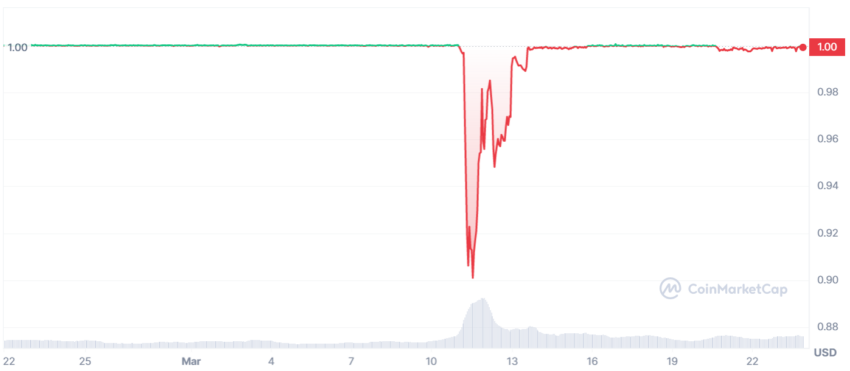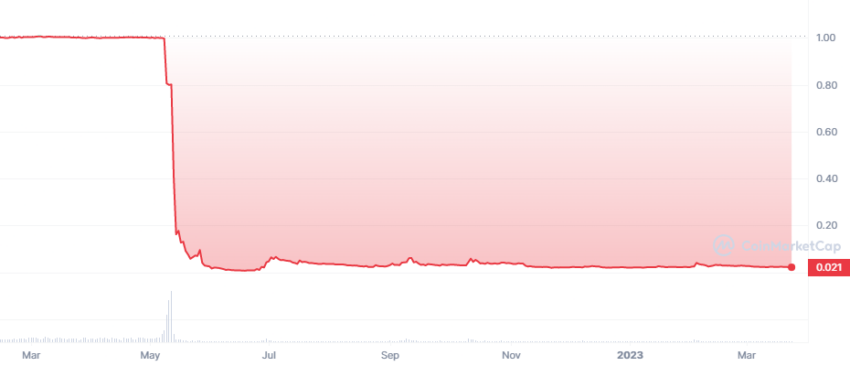Stablecoins are a crucial part of the crypto ecosystem. So when they lose their ‘stability,’ many things can go wrong, explains Tether’s CTO Paolo Ardoino.
Stablecoins have become a popular instrument in the cryptocurrency market, offering the benefits of digital assets while maintaining a stable value. However, these tokens’ stability cannot be fully guaranteed. Several stablecoins have de-pegged from their underlying assets, causing concern in the crypto community.
Stablecoins are digital tokens designed to maintain a stable value by being pegged to an underlying asset. A fiat currency, commodity, or cryptocurrency often underpins the stablecoin. They are essential for the crypto ecosystem, bridging traditional finance and digital assets like Bitcoin. Their intended stability and low volatility make them an attractive investment option and a haven during market turbulence.
The most popular stablecoins include Tether (USDT), USD Coin (USDC), and DAI. At the time of press, four of the top twenty cryptocurrencies by market cap are stablecoins, according to CoinMarketCap.
Stablecoins and De-Pegging
However, recent instances of stablecoins de-pegging from their underlying assets have raised concerns about their reliability.
Earlier this month, the popular stablecoin USDC depegged from its nominal value of 1 USD, falling to as low as 87 cents. The Silicon Valley Bank (SVB) crisis triggered the fall. USDC issuer Circle revealed that SVB held $3.3 billion, or about 8.2%, of its total USDC reserves. This provoked a crisis of confidence in the asset’s value.
Circle later announced that the reserve risk was “removed” after the funds became available days later.

Circle’s USDC and Tether’s USDT are both reserve-backed stablecoins. In the case of USDC, it is backed by cash and short-dated U.S. government bonds.
Traditional currency, cash equivalents, and funds from third-party loans back USDT. When these reserves are threatened, the coin’s price can temporarily deviate from its stable value.
The de-pegging phenomenon has also had implications for the wider crypto market. De-pegging presents a unique threat to DeFi platforms whose operations depend on the stability of these tokens.
“So 90% of DeFi has been relying on USDC alone,” explained Paolo Ardoino, Chief Technology Officer of Tether and Bitfinex. “I think this is a teachable moment. If you are in a decentralized industry, and you have a single point of failure, that is not the smartest thing.”
“If you have liquidity pools that offer loans, and you assume that the stablecoin is always one-to-one. And if they’re de-pegging 13%, that can cause insane problems to the liquidity pool. So luckily, nothing dramatic happened. But I think we could have seen the end of DeFi.”
Terra: The Great De-Pegging
The most infamous de-pegging of a stablecoin happened last spring with TerraUSD (UST). The stablecoin promised to maintain a value of $1 using Luna, its sister coin, to back the peg. However, in May 2022, the Terra stablecoin and Luna token collapsed due to a bank run-like event, causing a loss of investor confidence.
Algorithmic stablecoins like UST maintain price stability by controlling supply and demand, but major fluctuations in buying and selling can destabilize the coin. The increased supply of Luna on crypto markets and the de-pegging of TerraUSD led to Luna becoming practically worthless.

Luna and TerraUSD were subsequently delisted from most major crypto exchanges worldwide. The saga wiped out tens of billions of value from the crypto ecosystem in a matter of days.
Governments and Central Banks Response
To address the de-pegging issue, stablecoin issuers have taken several steps to restore confidence in their tokens. They have increased transparency, improved collateral management, and implemented stricter oversight measures.
However, technological and regulatory solutions are essential to prevent future de-pegging events. For example, algorithmic stablecoins, which use smart contracts to adjust the supply of tokens to maintain their value, may be less susceptible to de-pegging.
Stablecoins backed by a basket of assets or by central bank digital currencies (CBDCs) may also provide a more stable alternative.
According to Ardoino, there are not enough rules in place to guarantee investor confidence and safety. “I think regulators should give a bit more guidance on how stablecoins operate and what should have in its reserves. That, to me, is extremely important because right now there is no big jurisdiction that provides guidance on stablecoin reserves,” he explained.
Ardoino believes that despite the rise of central bank digital currencies (CBDCs), there is still ample reason to believe stablecoins are here to stay. For one, central banks “are scared,” he said.
“Because once you launch it, you don’t know the effects on the economy. It could be devastating. You don’t know how people will react, how it will change the banking industry, and how it will change businesses.”
It’s All About Education
Looking ahead, the de-pegging phenomenon is likely to have a long-term impact on the perception and adoption of stablecoins. New stablecoin projects may enter the market, offering innovative solutions to address the current challenges.
But unless they can live up to their promise of stability, there is little point to them. So what does Ardoino think we should do next?
“It’s all about education, right? I also think you should always try not to FOMO in the market because someone tweeted something on Twitter. Some fundamentals are important to understand and learn before starting to speculate in the market. So, I will always suggest people to first read why Bitcoin in our industry is important, and then start thinking about if you want to speculate or not.”
Disclaimer
Following the Trust Project guidelines, this feature article presents opinions and perspectives from industry experts or individuals. BeInCrypto is dedicated to transparent reporting, but the views expressed in this article do not necessarily reflect those of BeInCrypto or its staff. Readers should verify information independently and consult with a professional before making decisions based on this content. Please note that our Terms and Conditions, Privacy Policy, and Disclaimers have been updated.


